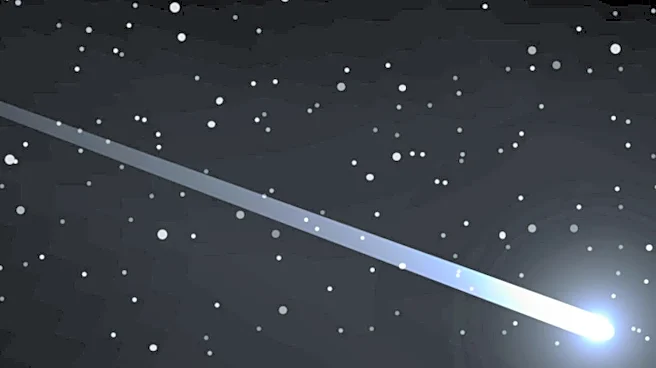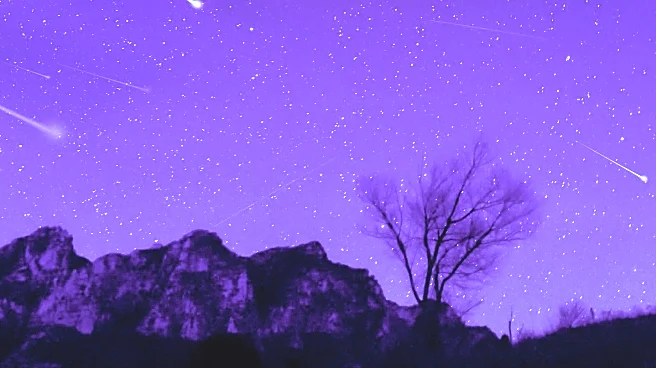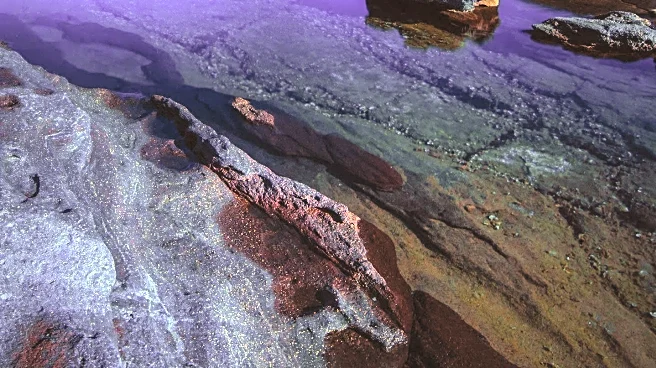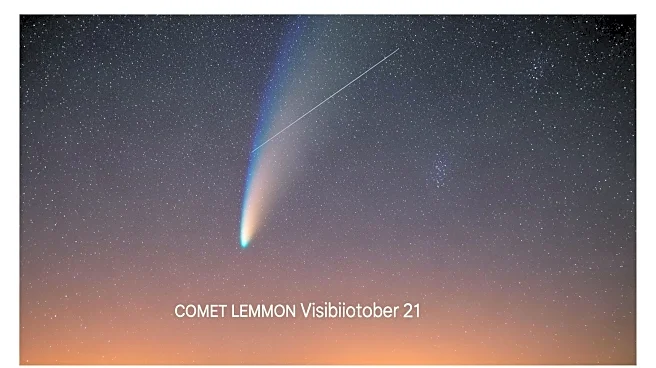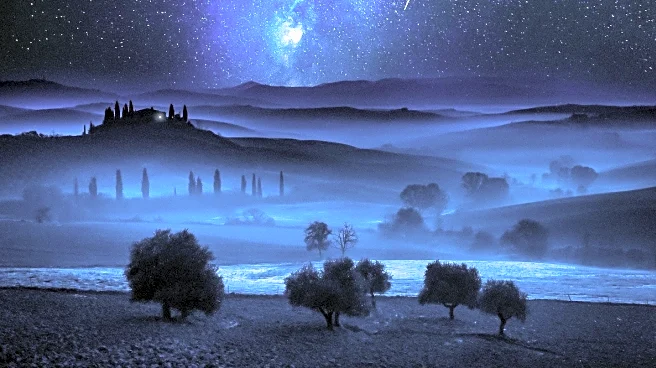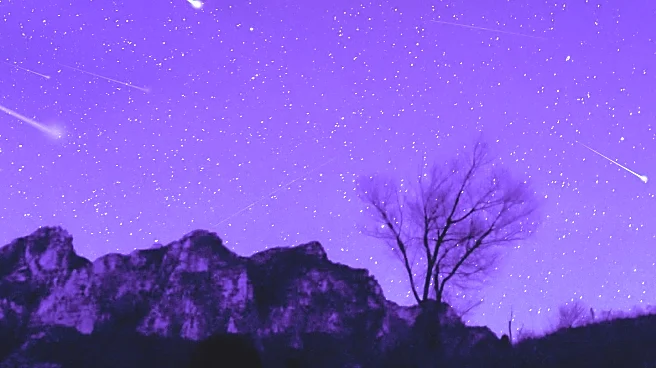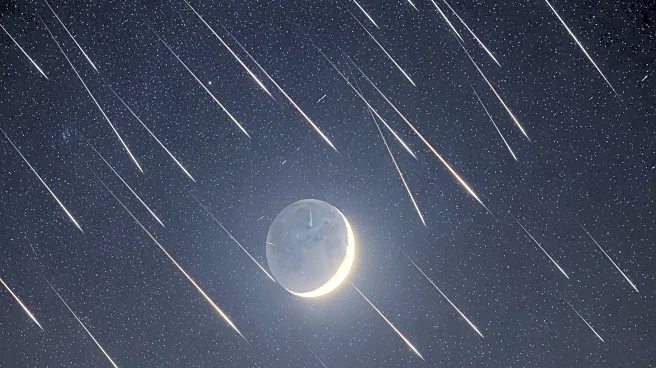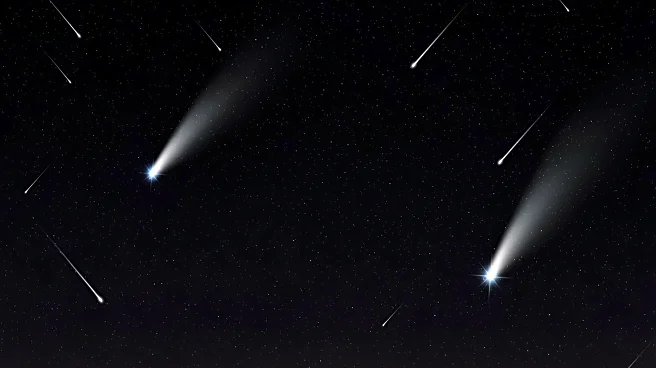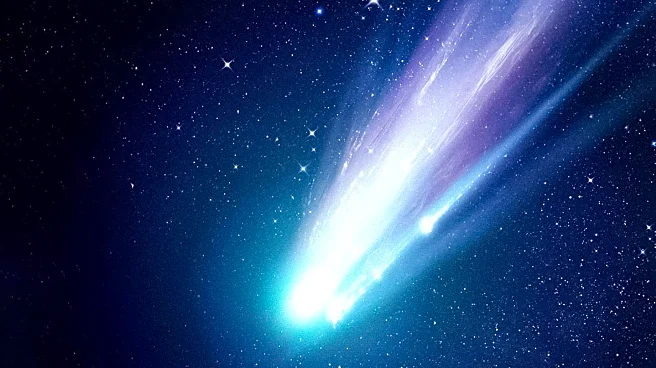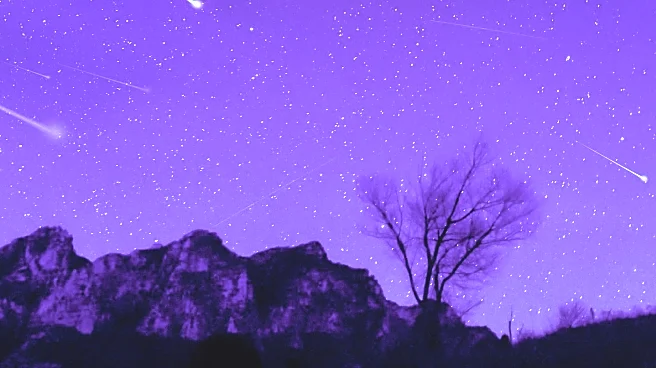What's Happening?
The Orionid meteor shower, known for its bright and fast-moving meteors, is set to peak on the night of October 20, 2025. This celestial event occurs as Earth passes through debris left by Halley's Comet, resulting in a display of 10 to 20 meteors per
hour under clear skies. The peak coincides with a new moon, enhancing visibility as the meteors won't compete with moonlight. The Orionids are characterized by their speed, traveling at approximately 41 miles per second, and often leave behind glowing trails known as 'trains'. Observers are advised to look towards the southern sky for optimal viewing, with the best times being around 10 p.m. Monday night or 4 to 5 a.m. Tuesday morning.
Why It's Important?
The Orionid meteor shower offers a unique opportunity for stargazers and astronomy enthusiasts to witness a natural spectacle. The event is significant as it provides insights into the remnants of Halley's Comet, a celestial body that last appeared in 1986 and is expected to return in 2061. The shower's occurrence during a new moon phase maximizes viewing conditions, making it an ideal time for educational and recreational activities related to astronomy. This event also highlights the interconnectedness of celestial phenomena and their impact on Earth, fostering public interest in space science and exploration.
What's Next?
Following the Orionid meteor shower, several other meteor showers are anticipated, including the Southern Taurids and Northern Taurids in early November, and the Leonids later in the month. These events continue to offer opportunities for observation and study of meteor activity. Additionally, the presence of supermoons in November and December will further enrich the celestial calendar, providing varied experiences for skywatchers. As the Orionids remain active until November 7, enthusiasts can continue to enjoy the spectacle over the coming weeks.
Beyond the Headlines
The Orionid meteor shower not only captivates observers but also serves as a reminder of the vastness and complexity of our solar system. The event underscores the importance of ongoing research and monitoring of celestial bodies, which can yield valuable data about the composition and behavior of comets and meteors. Furthermore, such events can inspire future generations to pursue careers in astronomy and space sciences, contributing to advancements in technology and exploration.
